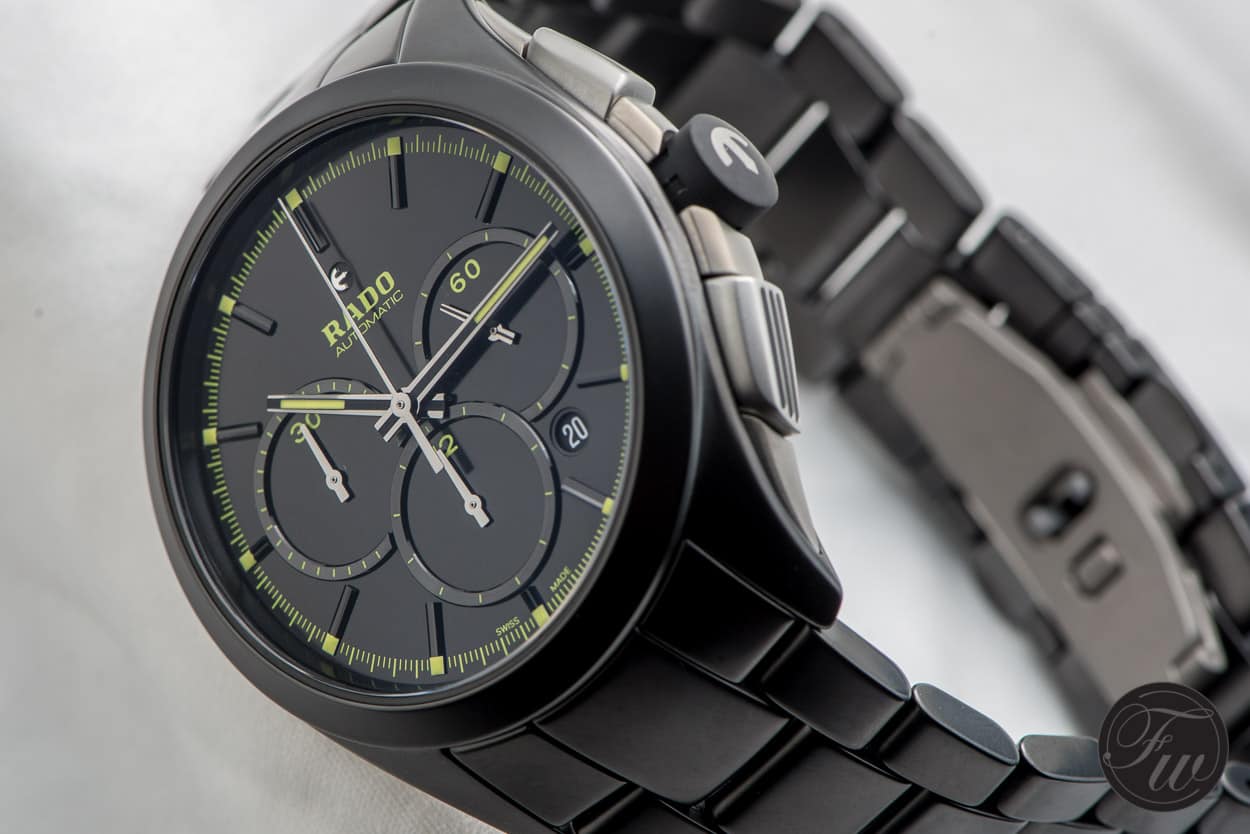Hands-On With The Rado HyperChrome Court Collection Watch
I remember that in the 1990s, parents of my friends and even some of their grand parents at that time, were wearing Rado watches. The shiny black ceramic timepieces that looked stylish – a bit B&O style – and were impossible to get scratched. Most of them were quartz watches though, so I quickly lost interest in them as I merely saw them more or less as a lifestyle or ‘design’ product.
Now to be honest, Rado has not been on our radar for a while, except during BaselWorld 2013 when we took the orange Rado HyperChrome Court Collection watch for our “Last Queen’s Day” article. This Rado HyperChrome Court Collection combines the typical Rado style of ceramic cases (and bracelets) and mechanical movements.
Time to get a closer look at this Rado HyperChrome Court Collection models. We examined the all ceramic version, reference 650.0525.3.017.
Rado HyperChrome Court Collection
Since I was wondering how Rado would be perceived amongst watch consumers, I requested some background data via Chronolytics – who track on-line watch consumers world wide – and it seems that Rado is doing particular well in India. The Rado Diastar and Sintra are the most popular collections over there. So where is the Rado HyperChrome doing well? We selected the HyperChrome collection and based on the IP-addresses of on-line watch consumers who’ve been looking for one, we noticed that most demand for the HyperChrome comes from (besides India of course, due to the high demand for Rado in general they were again the country with most demand) Germany, the Russian Federation and the United States.
The most sought-after HyperChrome reference was the Rado HyperChrome XXL automatic chronograph 650.0275.3.015 (measured over data from Q3 2014), which is the all ceramic version like the one we have in this review, except for the green accents on the dial.
So, let’s put the Rado HyperChrome Court Collection with green ‘grass court’ accents on the wrist and share my thoughts with you.
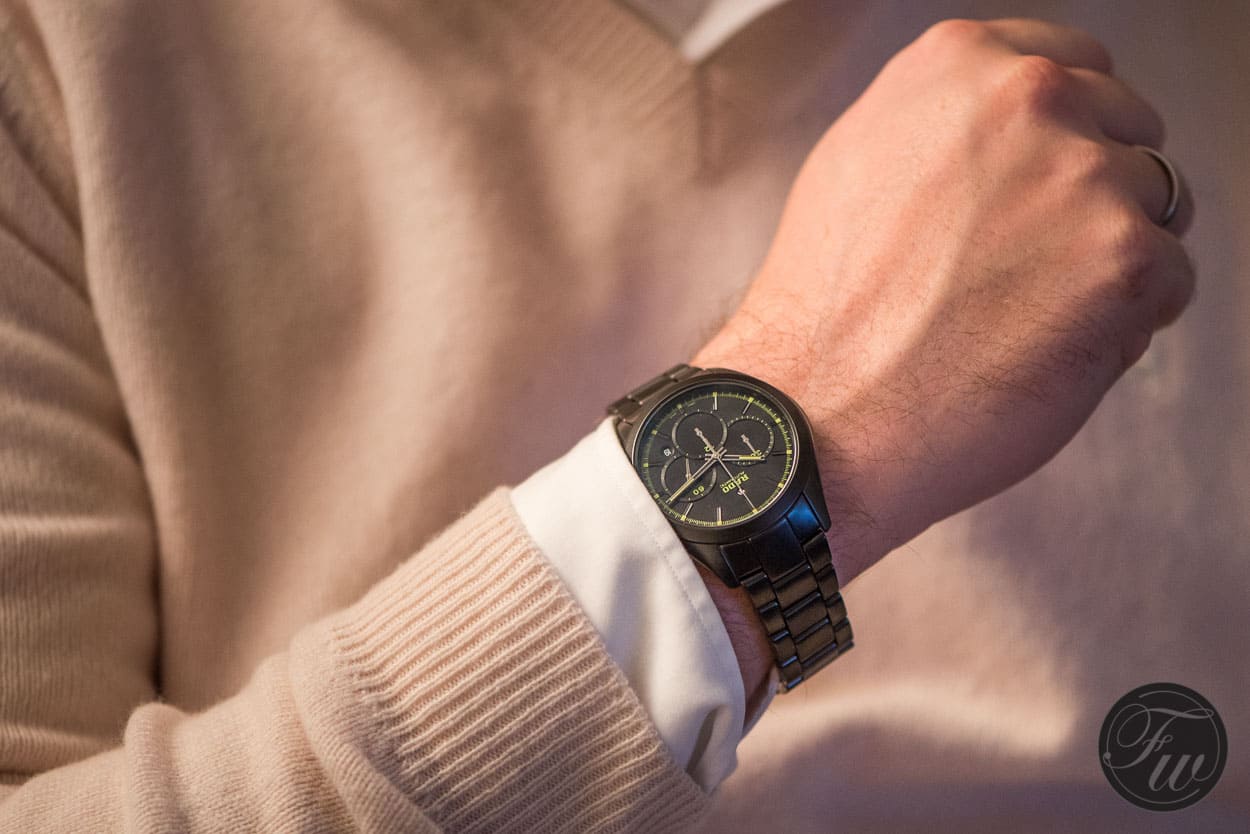 My first thought is that this watch – besides the ceramic material – has little to do with the 1990s Rado (Ceramica) collection I mentioned in the introduction of this article. Those were fine and slim bracelet-like watches made of ceramic. This is a hard core sports watch that happens to made of ceramic.
My first thought is that this watch – besides the ceramic material – has little to do with the 1990s Rado (Ceramica) collection I mentioned in the introduction of this article. Those were fine and slim bracelet-like watches made of ceramic. This is a hard core sports watch that happens to made of ceramic.
Three large sub dials indicate the seconds and the recorded minutes and hours for the chronograph. The central second hand is started, stopped and zeroed with the rectangular pushers. The date aperture (with black date disc, thank you!) is located at 4:30 and does not interfere the large sub dials.
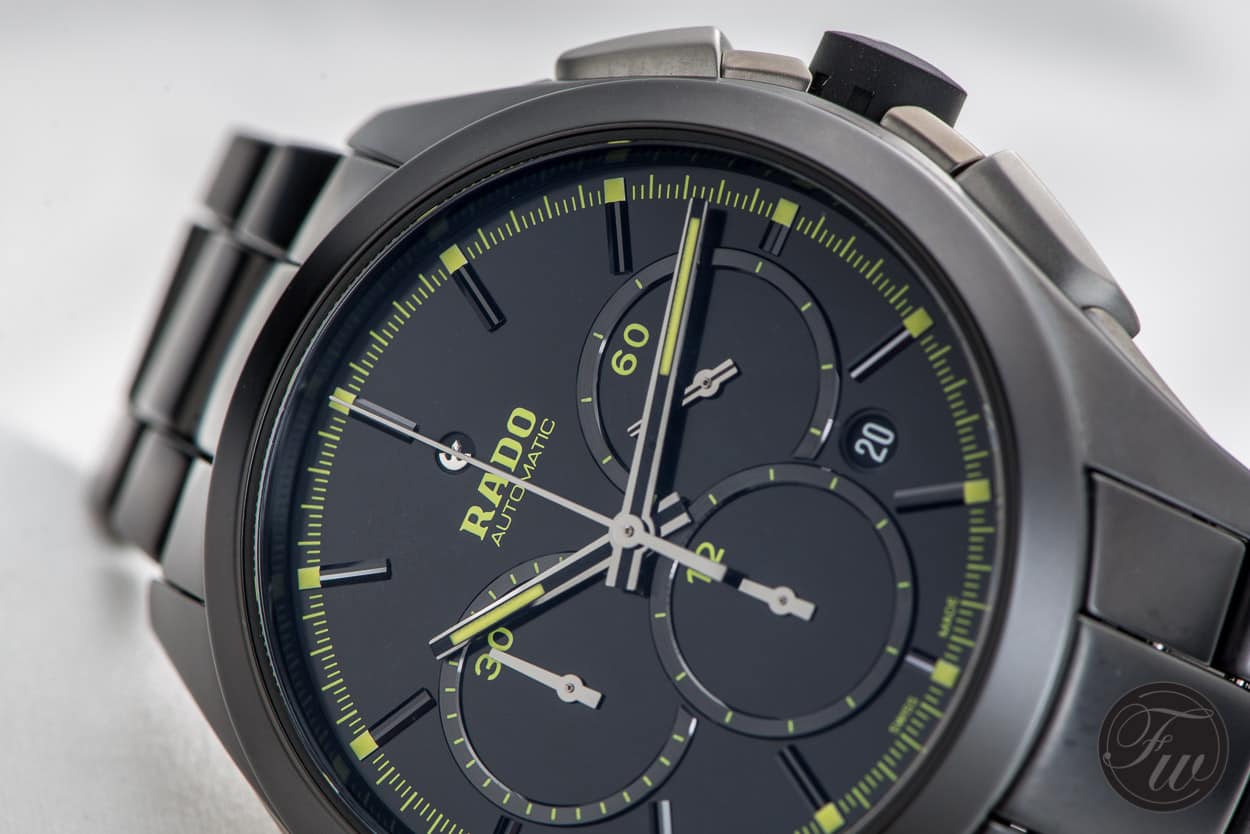 Above the Rado logo on the dial, located on 12 o’clock, you will see the logo that rotates equally with the movement’s rotor. A fun little detail on this otherwise serious sports watch.
Above the Rado logo on the dial, located on 12 o’clock, you will see the logo that rotates equally with the movement’s rotor. A fun little detail on this otherwise serious sports watch.
This HyperChrome collection was originally introduced in 2012, using a monobloc case construction (not to be confused with monocoq). This basically means that the watch case is made of one block of ceramic instead of ceramics used on a stainless steel core (as it was done in the past).
You can debate whether a 45mm diameter case is really comfortable being a sports watch and all, but I’ve found it to be quite good actually. A little side note is that I don’t do sports. The ceramic bracelet give the entire watch an integrated look & feel. Although I’d prefer a rubber HyperChrome strap if I were to buy the watch myself, the ceramic bracelet definitely gives the watch substance.
Flipping the watch around, you will see the mechanic movement used by Rado, based on ETA’s 2894-2 chronograph movement. The movement has a nice optical finish on the plate and bridge and Rado made sure to put a black rotor on there with ‘Rado Switzerland’ printed in white. Four screws are used to keep the caseback in place on the watch case. The watch is water resistant to 100 meters (10ATM). Both sides of the case use a sapphire crystal of course.
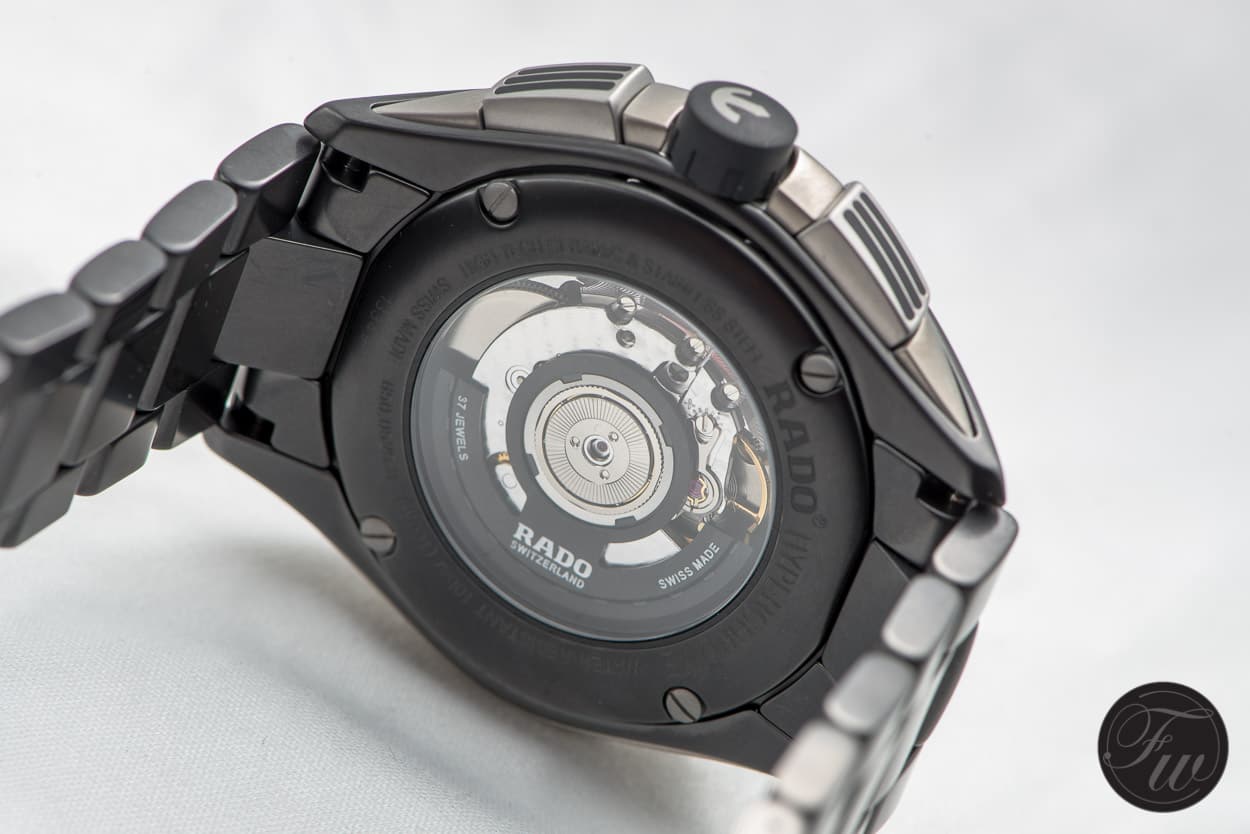
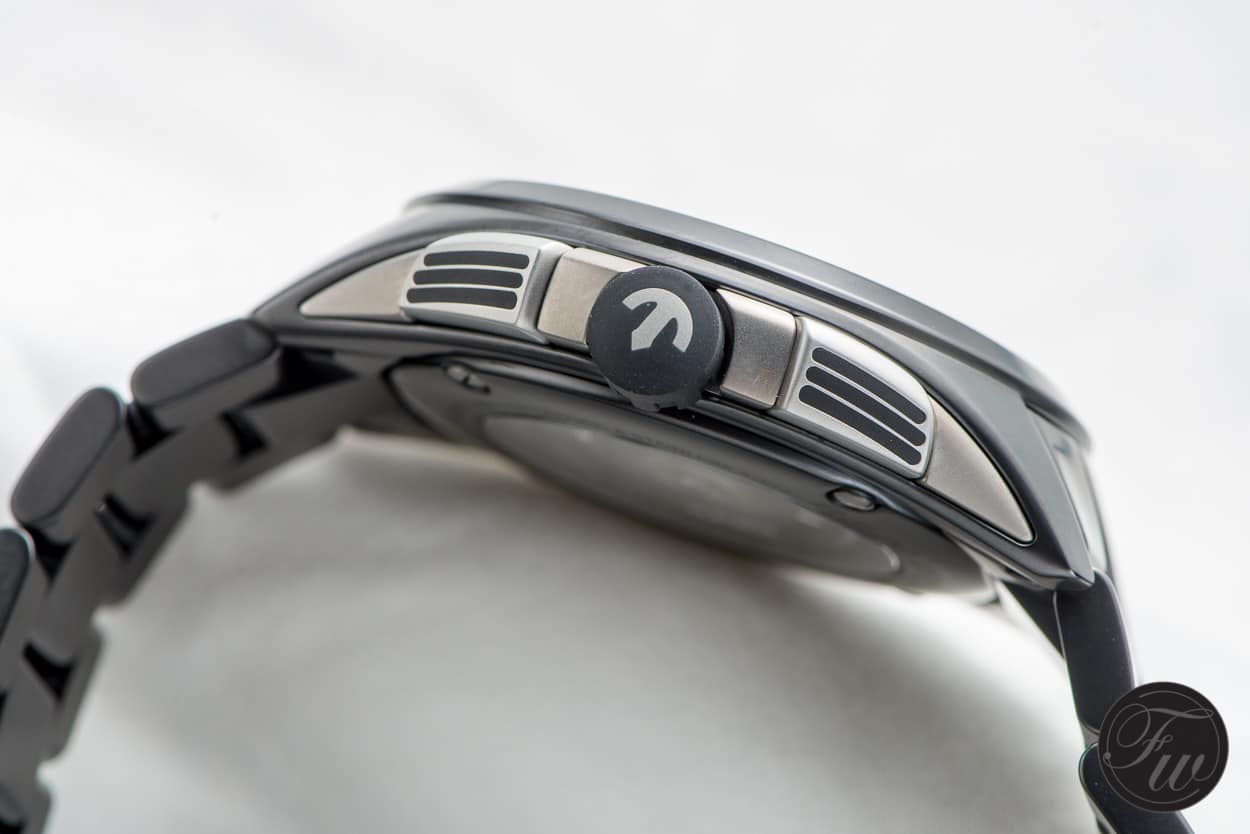
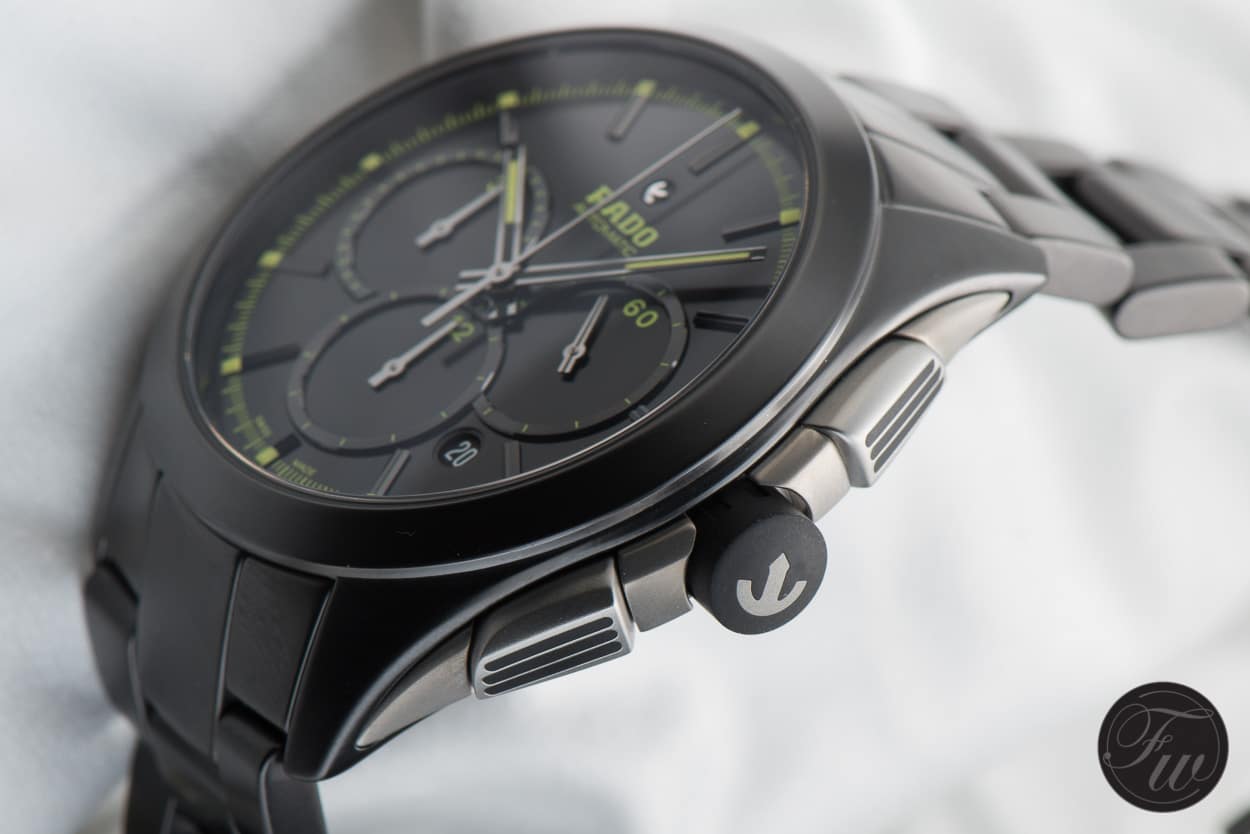 As I’ve written before, this is a sports watch and especially with a rubber strap (with nice green grass court accents) I can imagine the whole picture of a professional tennis player wearing this watch during the match.
As I’ve written before, this is a sports watch and especially with a rubber strap (with nice green grass court accents) I can imagine the whole picture of a professional tennis player wearing this watch during the match.
Rado has a long history regarding design (remember the beautiful Diastar 1?) and the use of high-end material such as ceramics. In all honesty I wouldn’t have put a Rado Sintra, Centrix or Integral on my wrist for a review as I feel these are more design accessories than watches for watch aficionados. This Rado HyperChrome however (and some of their other collections like the Original and D-Star) is a watch that will perfectly fulfil the need of a watch enthusiast that is also into sports (like tennis). I mean, it would be more realistic to play tennis with a Rado HyperChrome Court Collection on the wrist than a Richard Mille with a price tag of half a million, right?
The design of the Rado HyperChrome is very nice and ergonomic, despite the large size of the case. I would even say that design is probably still the most important aspect why one should buy this watch, besides the fact that it is a nice mechanical chronograph sports watch. The guy (or girl) who has a weak spot for design furniture, design HiFi (B&O or Loewe) and sports definitely should take a look at this Rado HyperChrome Court Collection, available in a few different colours (also orange and blue as well as white ceramics).
The price of the Rado HyperChrome Court Collection on a ceramic bracelet is $4600.- USD. The rubber strap version is priced at $4300.- USD and would my own preference. You can find an overview of all 45mm HyperChrome watches here.

